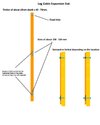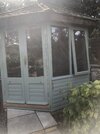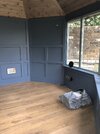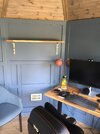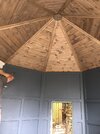Up to you what you hang off the end of the line in the shed, WiFi router would work fine, hardwiring is always favourite but sometimes impractical.
Powerline LAN is garbage, avoid. Wireless boosters can be good (I bought a couple of cheapies to run timing data at a racetrack, was getting decent performance at 100m range.
Your 4mm power cable (is it SWA?) at 17 metres will be fine for a 2kw wall heater, IT ket, lights and an occasional kettle. No hot tub tho.
Your installers are having a laugh (well they don't want the job and don't know what they're doing). To start with, I'd try an external access point (you can get some that only require mains, they connect to your internal WiFi and repeat it outside). If that's not a success then try a different access point ( Amazon ). If all else fails, you'll have to dig that trench (which is the hard bit). Throwing duct and CAT5E in and terminating is a doddle, definitely not £420 plus VAT.
). If all else fails, you'll have to dig that trench (which is the hard bit). Throwing duct and CAT5E in and terminating is a doddle, definitely not £420 plus VAT.
Powerline LAN is garbage, avoid. Wireless boosters can be good (I bought a couple of cheapies to run timing data at a racetrack, was getting decent performance at 100m range.
Your 4mm power cable (is it SWA?) at 17 metres will be fine for a 2kw wall heater, IT ket, lights and an occasional kettle. No hot tub tho.
Your installers are having a laugh (well they don't want the job and don't know what they're doing). To start with, I'd try an external access point (you can get some that only require mains, they connect to your internal WiFi and repeat it outside). If that's not a success then try a different access point ( Amazon


